Ever wondered how the VA evaluates rotator cuff repairs and shoulder bursitis? You’re not alone. As someone who’s navigated this complex process, I know firsthand how crucial it is to get accurate ratings for these conditions. The average veteran may face a lot of red tape just trying to understand their eligibility.
So why does it matter? Because those ratings translate into real benefits that can make life easier—financially and physically. In this guide, I’ll break down everything you need to know about securing a fair rating from the VA for your shoulder injuries.
Understanding VA Disability Ratings for Rotator Cuff Repair and Bursitis
If you’re a veteran dealing with a rotator cuff tear or shoulder bursitis, you know the pain and limitations these conditions bring.
The constant discomfort, weakness, and reduced range of motion can make even simple tasks feel impossible. I’ve seen firsthand how much these injuries impact daily life and work.
The good news? You may be eligible for VA disability benefits to help compensate for the challenges you face.
What is a Rotator Cuff Tear?
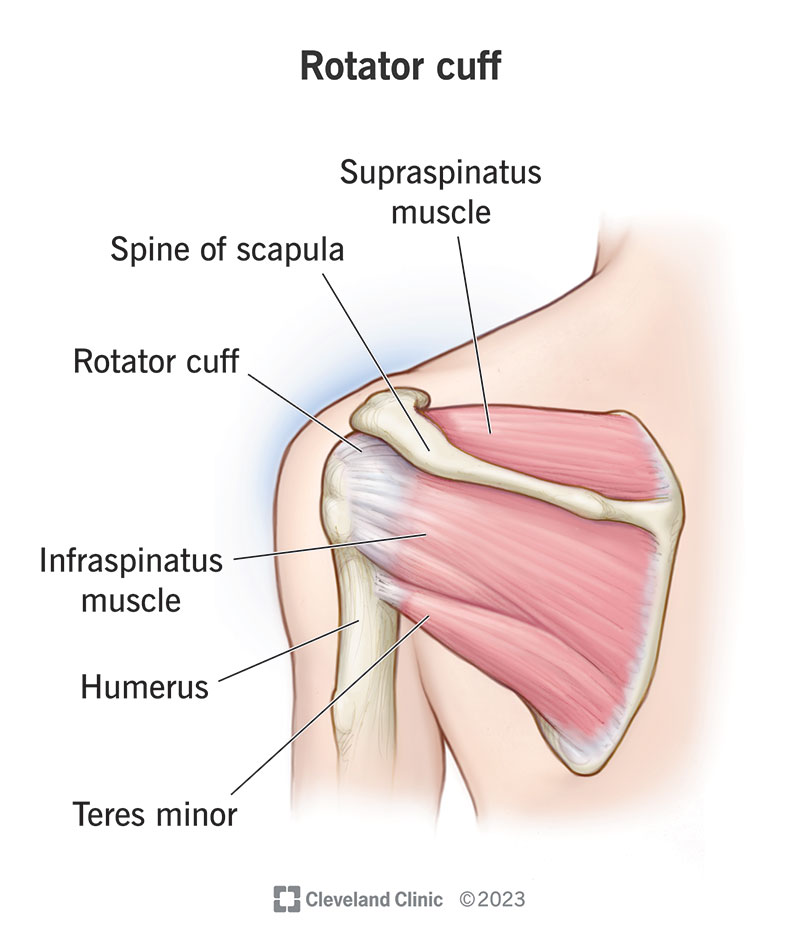
Your rotator cuff is a group of tendons and muscles that stabilize your shoulder joint and allow you to lift and rotate your arm. A rotator cuff tear occurs when these tissues are torn or damaged.
This can happen suddenly from an injury or develop over time from repetitive motions. The tear may be partial or complete, and often causes significant pain and weakness.
How VA Rates Rotator Cuff Injuries
The VA rates rotator cuff injuries under diagnostic codes 5200-5203, which cover shoulder and arm conditions. The rating you receive depends on factors like:
- Range of motion limitations
- Frequency and severity of pain
- Weakness and instability
- Whether your dominant or non-dominant arm is affected
Ratings typically range from 10-30%, but can go up to 80% for severe cases or if you’ve had a shoulder replacement. A 20% rating is common for rotator cuff injuries that cause frequent pain and moderately limit arm movement.
Connecting Rotator Cuff Injuries to Military Service

To receive VA disability for a rotator cuff tear, you must show that the injury is connected to your military service. This could mean the tear occurred during service or that service activities worsened a pre-existing condition.
Overuse injuries are common, especially for veterans who frequently lifted heavy gear or performed repetitive overhead motions. Combat injuries, falls, and motor vehicle accidents can also cause rotator cuff damage.
Providing a clear medical opinion from your doctor that links your current rotator cuff disability to a specific in-service event or job duties can help support your claim for benefits.
Symptoms and Limitations of Rotator Cuff Injuries

Rotator cuff tears can turn everyday activities into painful ordeals. Even basic motions like reaching for a glass in the cupboard or putting on a coat may be excruciating.
I remember a veteran telling me he couldn’t even lift his grandkids anymore without searing shoulder pain. His rotator cuff injury had robbed him of precious family moments.
Pain and Weakness in the Shoulder
The hallmark symptoms of a rotator cuff tear are pain and weakness in the affected shoulder. The pain is often worst when you lift your arm to shoulder level or above, such as when brushing your hair or reaching for an overhead shelf.
You may also have pain at night, especially if you sleep on the injured side. The weakness can make it difficult to lift objects or perform any task requiring shoulder strength.
Limited Range of Motion
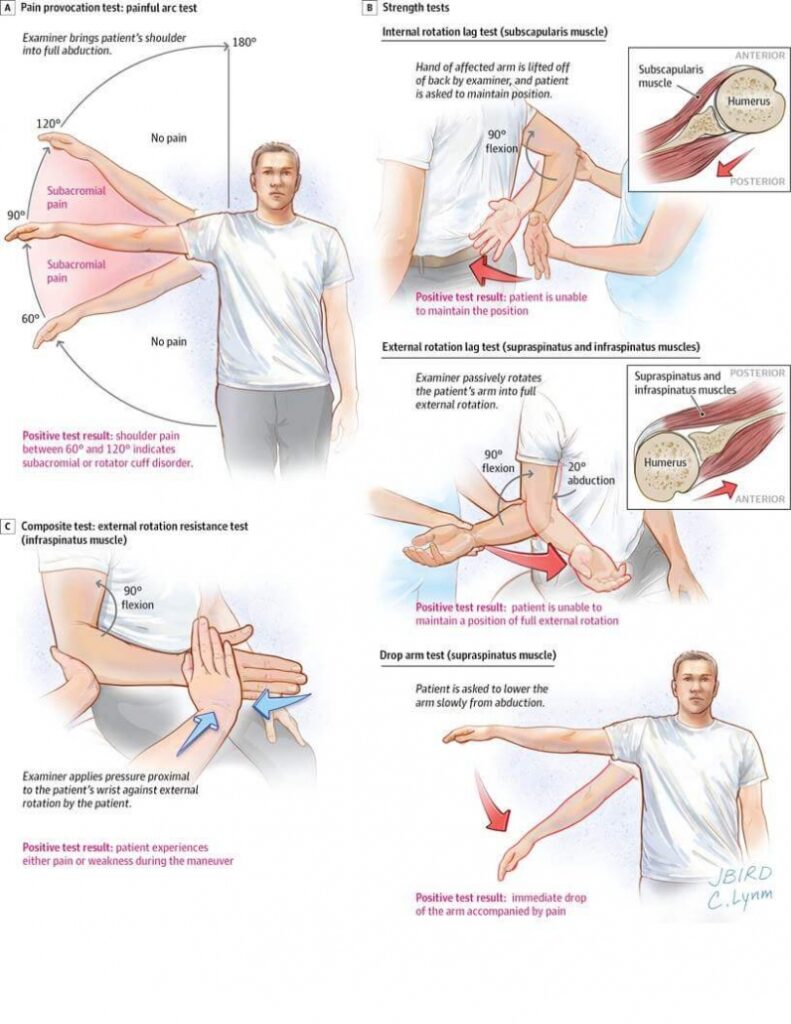
Rotator cuff injuries commonly restrict your shoulder’s range of motion. You may struggle to raise your arm out to the side or rotate it behind your back.
This loss of mobility can interfere with work duties and hobbies. A mechanic with a torn rotator cuff may be unable to lift tools overhead. An athlete might have to give up swimming or tennis.
In severe cases, the shoulder can become completely “frozen,” with little to no movement possible. This condition, called adhesive capsulitis or frozen shoulder, causes stiffness and pain that can last for months.
Impact on Daily Activities

The pain, weakness, and limited mobility from a rotator cuff injury can turn simple daily tasks into frustrating challenges. Dressing, bathing, cooking, driving – all these activities can be impacted.
Veterans may find themselves relying on others for help with basic self-care. Recreational and social activities are often limited. These functional limitations can be incredibly isolating.
Work duties may become difficult or impossible, especially for jobs that require lifting, carrying, or working with the arms overhead. Shoulder injuries are a common reason for missed workdays and disability claims.
Secondary Conditions Associated with Rotator Cuff Injuries
Rotator cuff tears don’t just cause pain and weakness on their own – they often lead to additional complications. These secondary conditions can compound your disability and may warrant extra VA benefits.
I’ve helped many veterans navigate the complexities of claiming secondary service connection for conditions that developed as a result of rotator cuff injuries. It can make a big difference in your overall rating and compensation.
Shoulder Bursitis
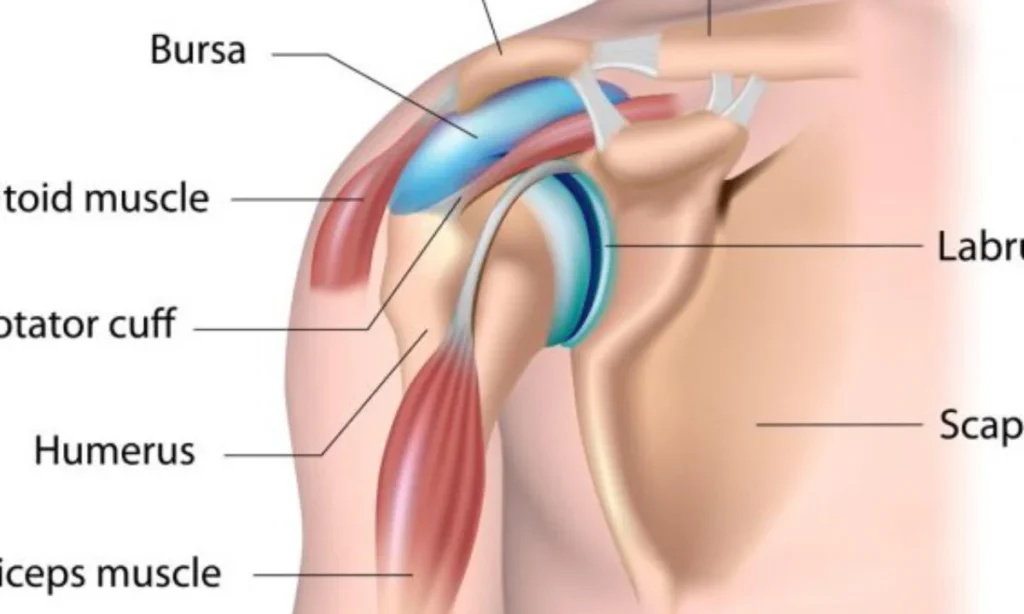
Bursitis is inflammation of the small, fluid-filled sacs (bursae) that cushion your shoulder joint. Rotator cuff tears can cause the bursae to become irritated and inflamed.
The VA rates shoulder bursitis under diagnostic codes 5200-5203, with ratings ranging from 10-80% based on limitation of motion and pain. Diagnostic code 5019 specifically covers bursitis.
If your shoulder bursitis developed as a result of your service-connected rotator cuff injury, you can claim it as a secondary condition for additional benefits.
Shoulder Tendonitis
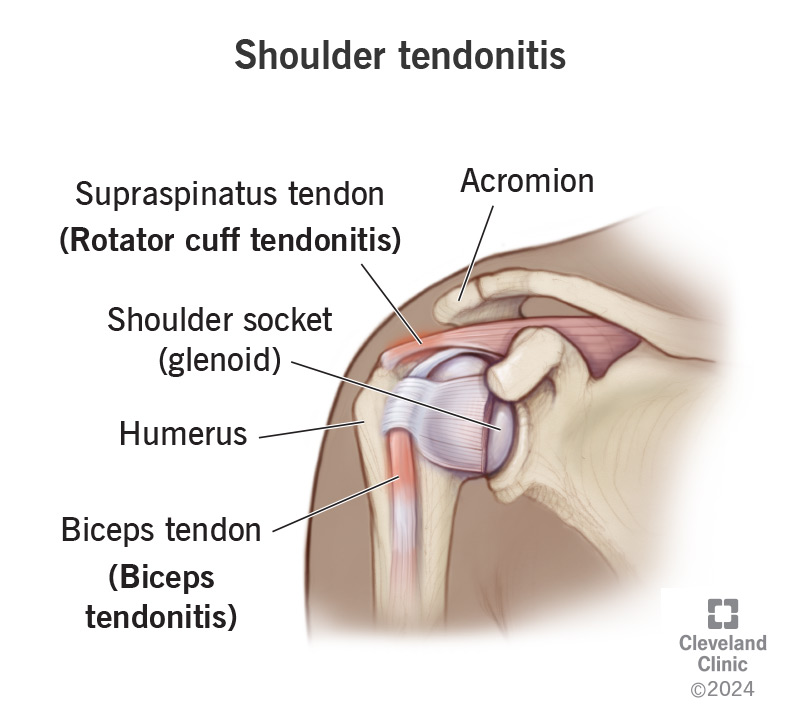
Tendonitis is inflammation of the tendons, the cords that attach muscle to bone. It often occurs alongside rotator cuff tears due to the altered mechanics and strain on the joint.
Shoulder tendonitis can cause additional pain, tenderness, and stiffness. If your service-connected rotator cuff injury led to tendonitis, that can be claimed as a secondary service-connected disability.
Shoulder Arthritis
Rotator cuff injuries can accelerate the development of osteoarthritis in the shoulder joint. The tear changes the mechanics of the joint, leading to faster wear and tear.
If arthritis develops as a result of your service-connected rotator cuff disability, you may be eligible for additional VA compensation. Be sure to have your doctor clearly document the link between your rotator cuff injury and arthritis.
Frozen Shoulder
As mentioned earlier, frozen shoulder (adhesive capsulitis) can sometimes develop after a rotator cuff injury. The shoulder becomes painfully stiff and immobile.
This condition often requires intensive physical therapy to regain range of motion. If your service-connected rotator cuff tear led to a frozen shoulder, that can be claimed as an additional disability.
Key Takeaway:
Rotator cuff tears and shoulder bursitis can cause severe pain, weakness, and limited motion. VA disability ratings range from 10-80%, depending on the severity and impact on daily activities. Providing clear medical evidence linking your injury to military service is crucial for getting benefits.
The VA Compensation and Pension Exam for Rotator Cuff Injuries
If you’re a veteran filing a VA disability claim for a rotator cuff injury, attending your Compensation and Pension (C&P) exam is crucial. This exam helps the VA determine your shoulder rating and percent rating, which directly impacts your VA disability benefits.
I remember my own C&P exam for a shoulder injury. It was nerve-wracking, but being prepared made all the difference.
What to Expect During the Exam

At your exam, the VA examiner will review your medical records and ask about your injury, symptoms, and limitations. They’ll test your shoulder’s range of motion and strength. You may undergo imaging tests like X-rays or an MRI.
The examiner is there to evaluate your condition, not to provide treatment. They’ll complete a report that the VA will use to assign your disability rating.
Providing Medical Evidence
Make sure to bring any medical records related to your rotator cuff injury to your exam. This includes civilian and VA medical records, surgical reports, physical therapy notes, and imaging results.
The more evidence you provide, the better the examiner can understand your condition. I submitted a stack of records to my examiner, and I believe it helped support my VA claim.
Importance of Attending the Exam
Whatever you do, don’t miss your C&P exam. If you do, the VA can deny your disability claim. The exam is your chance to have your condition evaluated in person.
If you absolutely can’t make it, reschedule as soon as possible. The VA will work with you to find a new appointment time. Trust me, it’s worth the effort to attend.
Receiving a VA Disability Rating for Rotator Cuff Injuries

Once your C&P exam is complete, the VA will assign a disability rating for your rotator cuff injury. This rating determines your level of VA disability compensation.
When I got my rating decision letter, I felt a mix of emotions. Relief that the process was over, but also confusion about what my rating meant.
Understanding the Rating Criteria
The VA rates rotator cuff injuries based on factors like range of motion, pain, and strength. A higher rating means your disability is more severe and limiting.
Rotator cuff injuries are typically rated at 10%, 20%, 30%, or 40%, depending on severity. A 10% rating might be assigned for mild symptoms, while a 40% rating reflects significant impairment.
Diagnostic Codes Used for Rotator Cuff Injuries
The VA uses specific diagnostic codes to rate rotator cuff injuries. The most common codes are 5200 for shoulder ankylosis, 5201 for limited arm motion, 5202 for other impairment of the humerus, and 5203 for impairment of the clavicle or scapula.
Your rating may be higher if your dominant arm is affected. For example, a veteran with a 20% rating in their non-dominant arm might receive a 30% rating if it were their dominant arm.
Appealing an Unfavorable Rating Decision
If you disagree with your rotator cuff injury rating, you have the right to appeal. You can submit a Notice of Disagreement and request a higher rating.
I’ve assisted many veterans with the appeals process. The key is to provide additional medical evidence and a strong argument for a higher rating. Sometimes an expert medical opinion can make a difference.
Qualifying for Total Disability Based on Individual Unemployability (TDIU)

For some veterans, a rotator cuff injury is so severe that it prevents them from working. In these cases, Total Disability Based on Individual Unemployability (TDIU) may be an option.
I’ve seen firsthand how a shoulder disability can derail a veteran’s career. TDIU can provide the financial support needed when work isn’t possible.
Eligibility Requirements for TDIU
To qualify for TDIU, you must have one service-connected disability rated at 60% or higher, or multiple disabilities that combine to a 70% rating with one rated at 40% or higher.
You must also show that your service-connected disabilities prevent you from maintaining substantially gainful employment. This means you can’t earn above the poverty threshold due to your disabilities.
How Rotator Cuff Injuries Can Impact Employability
A severe rotator cuff injury can make physical labor and overhead work impossible. Even sedentary jobs may be affected if you can’t type, write, or use your arms for long periods.
I’ve worked with veterans who had to quit jobs in construction, manufacturing, and transportation due to rotator cuff disabilities. For these veterans, TDIU was a lifeline.
Applying for TDIU Benefits
To apply for TDIU, submit VA Form 21-8940 along with medical evidence showing how your rotator cuff injury impacts your ability to work. Statements from employers, coworkers, or vocational experts can also support your claim.
Once you send in your application, the VA might need more information or ask you to attend additional exams to better understand your situation. If they approve your TDIU request, you’ll get paid as if you’re at a 100% disability rate, regardless of what your combined rating adds up too.
Key Takeaway:
Attending your C&P exam is key for getting a fair VA disability rating. Bring all related medical records and be prepared to discuss your symptoms. If you can’t make it, reschedule right away.
Conclusion
Securing VA Disability Ratings for Rotator Cuff Repair and Bursitis isn’t just about filling out paperwork—it’s a critical step to ensuring you’re recognized for your service-connected injuries. Think of it as setting the record straight, letting your sacrifices be acknowledged with the benefits that match.
From understanding how rotator cuff tears are rated to connecting these injuries directly back to your military service, this guide has walked you through each necessary step. It’s not just about getting any rating; it’s about securing one that accurately reflects your physical limitations and their impact on daily activities.
The journey might seem fraught with red tape and medical jargon, but remember—this is about getting what you deserve. The compensation exam? A vital part of proving how deeply these injuries affect you. Don’t skip it! And if the initial decision doesn’t go your way, appealing could be key.
I’ve laid out every card in my hand because I believe knowledge is power—and knowing more means potentially earning a better outcome. Now armed with insights into secondary conditions like shoulder bursitis or tendonitis which might compound your claim, plus tips on TDIU when work becomes an impossibility… You’re ready!
This isn’t merely bureaucratic hoop-jumping; it’s reclaiming control over life post-service—one application at a time!


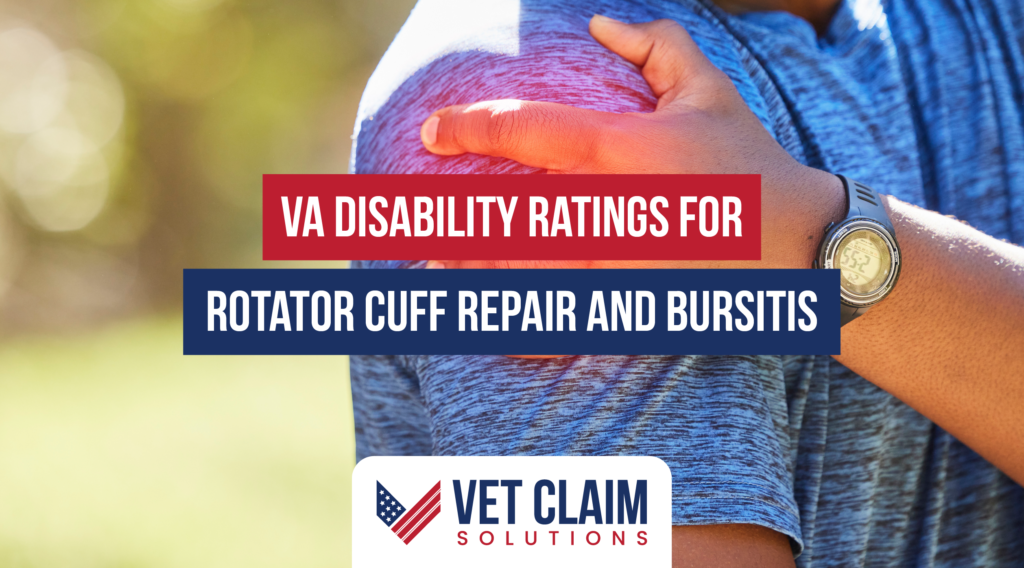
This Post Has 2 Comments
Pingback: Protecting Your Rights: Spotting VA Disability Fraud Safely
Pingback: How Veterans Can Get a 100% Disability Rating: Medical Evidence Guide – Attain Med Group